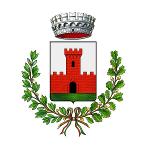Vaso a triplice corpo - Triple-body vase
Ultimo aggiornamento: 30 maggio 2024, 13:41
Il vaso ha una base unica dalla quale si diramano tre steli che sorreggono tre coppe. Le coppe presentano svasatura abbastanza leggera nel punto di massima espansione.
La decorazione delle coppe presenta una greca chiamata “meandro continuo” perché si estende su tutta la circonferenza.
Il meandro è infatti un sinonimo di greca, la classica decorazione che tutti conosciamo e ancora oggi molto in voga.
La seconda riga di decorazione, più bassa, presenta invece un ornamento detto a denti di lupo dentro due linee parallele.
Alla decorazione incisa si aggiunge anche una decorazione a zig-zag dipinta sopra.
Le decorazioni delle coppe sono state realizzate ad incisione con stecche di legno e poi riempite di pasta rossa. Il contrasto cromatico imprime un effetto di grande eleganza e sobrietà all’intero manufatto.
L’impasto è buccheroide. Il bucchero è un tipo di ceramica nera e lucida, piuttosto sottile e leggera, che nel tempo diventerà una caratteristica tipica degli Etruschi per realizzare vasi.
Anche in questo caso il vaso è stato modellato con la tecnica del “colombino” detta anche “a cercine”, che prevede la realizzazione di lunghi cordoni di argilla arrotolati l’uno sopra l’altro ed in seguito lisciati fino alla completa uniformità della superficie. Questo tipo di coppe potrebbero anche essere state realizzate a stampo. Sul piede sono presenti dei fori interpretabili come un restauro antico.
Il vaso fa parte del ricco corredo funerario della tomba 21 che ospitava una donna picena di rango molto elevato.
Nella tomba sono stati ritrovati numerosi oggetti di ornamento, quali orecchini, collane, fibule, pendagli e armille o bracciali. Oggetti di osso e ambra, vasi di terracotta, alcuni anche con fini decorazioni, altri in bucchero, il colore nero-lucido della ceramica.
Datazione: VI sec. a.C.
ENGLISH
The vase has a unique base from which three stems branch off holding three cups. The cups have a fairly light flaring at the point of maximum expansion.
The decoration of the cups has a Greek pattern called "continuous meander" because it is extended over the entire circumference.
The meander is in fact a synonym of Greek, the classic decoration that we all know and still very popular today.
The second row of decoration, lower, has an ornament called wolf teeth inside two parallel lines.
A painted zigzag ornament is also added to the engraved decoration.
The decorations of the cups were made by engraving using wooden slats and then filled with red paste. The colour contrast gives an effect of great elegance and sobriety to the entire artefact.
The dough is buccheroide. Bucchero is a type of black and glossy ceramic, rather thin and light, which over time will become a typical feature of the Etruscans to craft vases.
Also in this case the vase has been modeled with the technique of the "colombino", which provides for the creation of long clay cords rolled one over the other and then smoothed until the complete uniformity of the surface. This type of cups may also have been moulded. On the foot there are holes that can be interpreted as an old restoration.ù
The vase is part of the rich funerary kit of Tomb nr 21 that housed a very high ranking Picen woman.
In the tomb there also were numerous objects of ornament, such as earrings, necklaces, fibulas, pendants and armillae or bracelets. Bone and amber objects were found there together with clay vases, some of them also with fine decorations, others in bucchero, the black-glossy color of the ceramic.
Dating: sixth century BC
